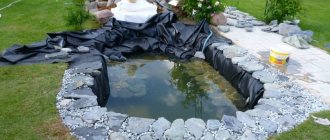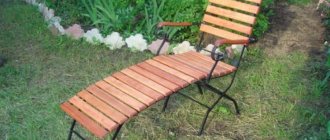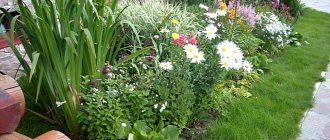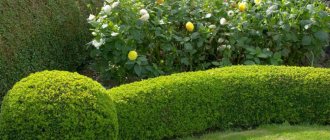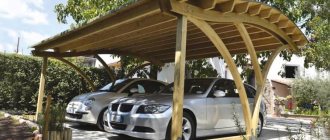Pots, tubs and beds filled with flowers add interest to any garden. Container decor also adds versatility to gardens. Container garden plants provide color, provide a focal point in the garden, and tie the home's architecture to the garden. Container gardening also has practical functionality - growing spices and medicinal herbs. Growing garden crops in containers is not as easy as it seems. When planning to plant your first plants in pots, a gardener faces many questions:
- What soil is best for the plant?
- How much water is required for irrigation?
- Where is the best place to place the container after planting?
- Do plants need to be fed?
- If yes, how often?
To answer questions related to container growing, we've put together this list of gardening tips needed to develop a successful container garden.
Tips for Selecting Container Plants for Your Containers
- If you are going to grow a container garden on your site, choose those crops that are guaranteed to grow in your climate zone.
- If your garden gets sun all day, choose sun-loving plants. For shady areas of the property, choose plants that don't require a lot of sunlight.
- Succulents are a great option for those who rarely visit their garden plot or forget to water their containers regularly. Plus, succulents look stunning.
- If you grow vegetables in your containers, be sure to choose species that will thrive in containers.
- There are many annual flowers that grow well in containers, but don't forget to include perennials. These plants can be removed from the container at the end of the growing season and moved indoors for the winter.
- By planting different types of plantings in pots, you can create an almost unlimited number of color combinations. The best arrangements are created from container plants that have beautiful foliage and flowers.
- Large containers are suitable for indoor and tropical plants. They can be grown outdoors throughout the summer season, but be sure to move them into a warm environment before temperatures dip into the sub-zero range.
- Basil, onions, thyme and other herbs grow well in pots or small containers that can be placed in any location convenient for you.
Secret 5: Add Multiple Levels
Why not make your container garden grow in all four directions at once: in breadth, up and down?
Complete the composition with plants hanging down and reaching up.
The following are suitable as hanging “tenants” of a container garden:
- azarina,
- alyssum (alyssum),
- petiolate immortelle,
- bidens,
- brachycoma,
- verbena,
- Iberis,
- calibrachoa,
- Lavrentiya,
- lobelia,
- nasturtium,
- ivy-leaved pelargonium,
- petunia ampelous,
- sanvitalia,
- scevola,
- winged thunbergia,
- zinnia angustifolia,
Any fast-growing vine can be grown from climbing vines:
- sweet peas,
- kobeya,
- nasturtium,
- fiery red beans,
- morning glory.
Of course, when planting climbing plants in a container garden, it is worth providing them with support!
- The best flowering annual vines for the garden (25 photos)
These annual climbing plants are perfect for your garden!
Tips for preparing soil for container plants
- If you want a container garden that grows well, don't skimp and buy the cheapest potting mix.
- To reduce watering needs and add beneficial minerals and nutrients to your containers, mix the soil with ready-made compost before filling your containers. The proportion for the substrate is 50/50.
- If you are going to grow succulents, instead of compost, add sand, preferably coarse sand, or use a mixture for succulents or cacti.
- When purchasing, choose a potting mix that includes enough organic matter. This gives plants a source of nutrients throughout the season without the need to add synthetic or chemical fertilizers that can burn delicate roots or cause leaf scorch.
Spirea
This culture is very plastic and easily tolerates transplants. It is advisable to line the inside of the container for spirea with a layer of breathable material. After drainage comes a substrate of peat, sand and garden soil.
The plant blooms for a long time and has many varieties to suit every taste.
Florists constantly use spirea for their garden design ideas.
Tips for planting flowers and plants in containers
- If you are repotting a plant from your nursery or another pot, carefully inspect its roots. Trim off any rotten ends.
- Don't skimp on space in the container. For better root growth, the entire pot must be filled with substrate.
- Plant each plant at the same depth as in the nursery.
- Don't bury plants too deep or leave them too tall. This can cause the roots to dry out too quickly.
Juniper
Containerized juniper sometimes does not look like the one planted directly into the ground. This plant loves sun and good air humidity.
Almost all varieties of juniper have soft needles with an expressive aroma. This culture can create an atmosphere of healthy relaxation on the site.
In addition, the plant is easy to care for and looks great, which is quite suitable for business people.
Tips for Watering Garden Containers
- Watering is the most important job on a gardener's to-do list. Don't forget this. If you tend to ignore it, create an automatic container watering system or plant drought-tolerant plantings such as succulents and cacti.
- Don't wait until the plants start to wilt without watering.
- When watering, make sure you water each container several times.
- Water in the morning if possible. This helps control fungal diseases and other pests, and minimizes water loss due to evaporation.
Barberry Thunberg
The plant is considered one of the most unpretentious in the garden. A mixture of humus, garden soil and sand is suitable for planting Thunberg barberry. The acidity level should be neutral.
The culture is not afraid of wind, heat and partial shade. Depending on the light, some species change leaf color. Barberry blooms for a long time and decoratively.
From containers with these plants you can create a hedge and delimit the area. Most varieties of Thunberg barberry are cold-resistant.
Tips for feeding plantings in containers
- Although the containers were filled with a mixture of soil and compost containing nutrients before planting, it is advisable to add additional fertilizer every three to four weeks during the growing season.
- There are many different organic fertilizers, such as ash, that are ideal for container gardening.
- During irrigation or after rain, water washes away potassium and nitrogen from the soil. Therefore, after prolonged rains or heavy watering, it is necessary to add complex fertilizer to the substrate. This supplement comes in two forms: granules (tablets) and liquid. Fertilizers in liquid form are absorbed faster by plantings but must be applied more often. Tablets or granules take longer to dissolve, so they need to be added less often.
- When you buy plantings for a container garden, consult with the seller what fertilizers should be given to the plants and how often.
- Vegetables should be fertilized more often than ornamental plants, as they require more fertilizer to produce a good harvest. Using organic fertilizer is even more important when growing organic vegetables.
Blueberry
Decorative blueberries that produce a bountiful harvest have long settled on the plots of Russians. A few basic rules for caring for crops:
- 6-8 hours of sun per day;
- acidified soil;
- good soil moisture;
- organic fertilizers;
- cross pollination;
- volumetric pot;
- shelter at the end of the season.
You can make compotes, jellies and refreshing drinks from delicious berries. Healthy blueberries contain a lot of vitamins and microelements.
Container Garden Design Tips
- Place pots of flowers on the ground or on a hill, place them on a windowsill, or hang them on the porch of your home.
- A pair of matching containers on either side of the front door makes a welcoming decoration.
- Potted flowers on a deck, near a gazebo or patio can add color and coziness to garden seating areas.
- You can use single large containers for outdoor home decoration and also consider organizing groups of pots, both small and large, on stairs, balconies or anywhere in the garden.
- Small pot arrangements can contain a collection of favorite plants - herbs used for both decoration and cooking, dwarf evergreens, perennials or any other flowers. Ornamental grasses look great in the composition.
- Containers planted with one type of planting - rosemary, basil or colorful ornamental grass - can look stunning.
Storage against the wall of the house
Conifers, fruit trees, and ornamental shrubs can be left to winter outside on the south side of the house. Group the plants by size and follow the instructions below:
- Place plants in small pots in larger pots and add soil between them;
- place the containers in a row, as close to the wall as possible;
- Place pegs around the pots, wrap them in netting or burlap;
- fill the internal space with dry leaves and hay.
It is enough to wrap coniferous plants with non-woven material or special covering caps.
Tips for combining colors in a container
- A great idea for an arrangement is one focal plant such as coleus or geranium with colorful leaves combined with a few plants planted around the edge of the pots such as petunias, bacopa, creepers or zinnias.
- Fillers can be added to the main planting - plants with smaller leaves and flowers that add color and fill out the arrangement throughout the season. Excellent toppings include salvias, verbenas, ornamental peppers and wax begonias, as well as parsley or licorice.
Container gardening is ideal for those with limited garden space. Confined to a balcony or terrace, small patio or garden bed, gardeners can grow a wide variety of vegetables or flowers in containers. Indoor plants planted outdoors in the shade also make beautiful additions to garden landscaping.
Shrubs
Pot growing is suitable for miniature and patio roses, some floribundas and small ground cover varieties (Cinderella, Goldjuwel, Charmant, Fortune, Coco, Knips, Mainaufeur, Neon, etc.). Planting roses with lavender, hyssop, Steller's, Schmidt's wormwood or hybrid Powis Castle look wonderful (the latter is winter-hardy only down to -20°C, winters better in the basement). For planting in containers, you can use gift patio roses, sold in all flower shops. They should be treated more as throwaway plants, although some varieties are hardy enough to last for several years when covered.
|
|
The classic European version - boxwood cut into a ball or cone - in a pot is acceptable only in a slight shade, otherwise it will burn in the sun. For the winter it needs to be dug in and covered using a frame method. Do the same with evergreen euonymus Fortune and Japanese, or move them to a cool windowsill. It is also traditional to use heathers in containers. A beautiful mat in a low flowerpot placed in the shade is formed by the winter-green subshrub pachysandra apex (you can combine the main species with the Green Carpet variety, which is distinguished by its light green foliage, or the variegated Variegata variety).
More unpretentious and fairly drought-resistant shrubs that will feel great in container compositions are bright small varieties of spireas (Golden Princess, Gold Flame, Little Princess) and Thunberg barberries (Admiration, Goldalita, Tiny Gold, Golden Ring, Kornik, Rosey Rocket and etc.). Barberries should be used only when the container is located away from paths and there is no danger of getting caught on its thorny branches, especially for children. They can be trimmed.
|
|
White Ivory Halo with white-edged foliage grows slower than other varieties, is not tall and tolerates pruning well, ideal for growing in large flowerpots. In the sun or partial shade, Stephanandra incisifolia will give cascading growth (its Crispa form with more rugged foliage is especially interesting).
Among heat-loving shrubs, you can plant the graceful variegated and low Keria japonica Picta. There is a compact buddleia variety called Buzzy for container growing. For the winter, it is cut off and covered with sand and wood ash. The black elderberry Black Lace has a wonderful crown with purple openwork foliage and pinkish airy inflorescences, which combines perfectly with the yellow-leaved forms of any plants, and no worse with green ones.
|
|
Clematis lovers can plant early large-flowered varieties of the Boulevard series adapted for container keeping - Angelique, Oоh-la-la, Chantilly, Parisienne, double Kaiser, blooming in early summer on last year's shoots, and under favorable conditions - again in July-August on the current year's shoots . They belong to the 2nd group of pruning: in the fall, weak and dead shoots are removed, the rest are trimmed, leaving 10-15 nodes for cover. Although varieties that can be completely cut off before winter are more convenient for our area, container growing allows us to provide them with warmer shelter.
|
|
Modern style
Unusual shapes of flowerpots, unexpected materials and colors - this is how you can see flower containers in a modern style. Do-it-yourself outdoor containers will delight you with their creativity and individuality.



